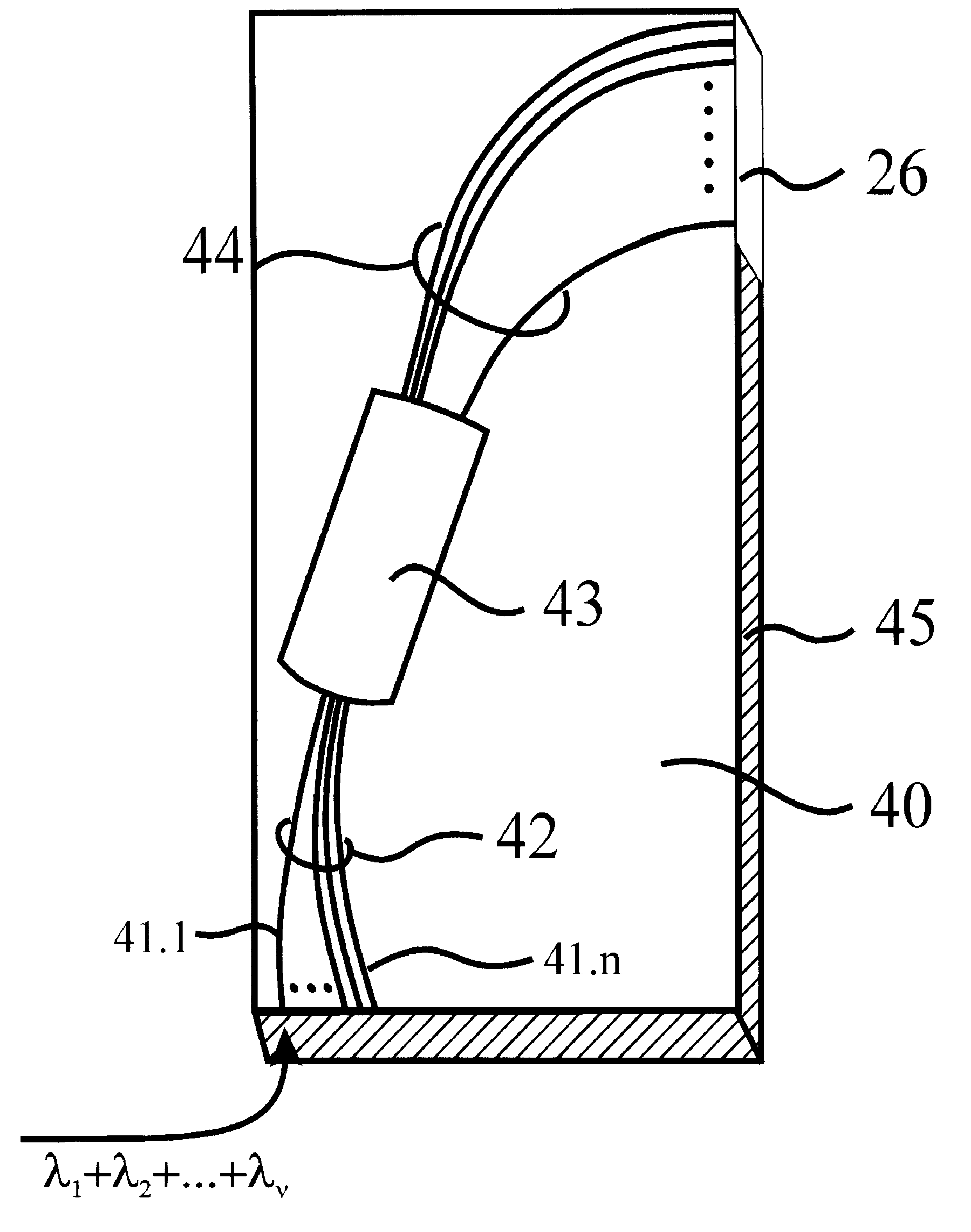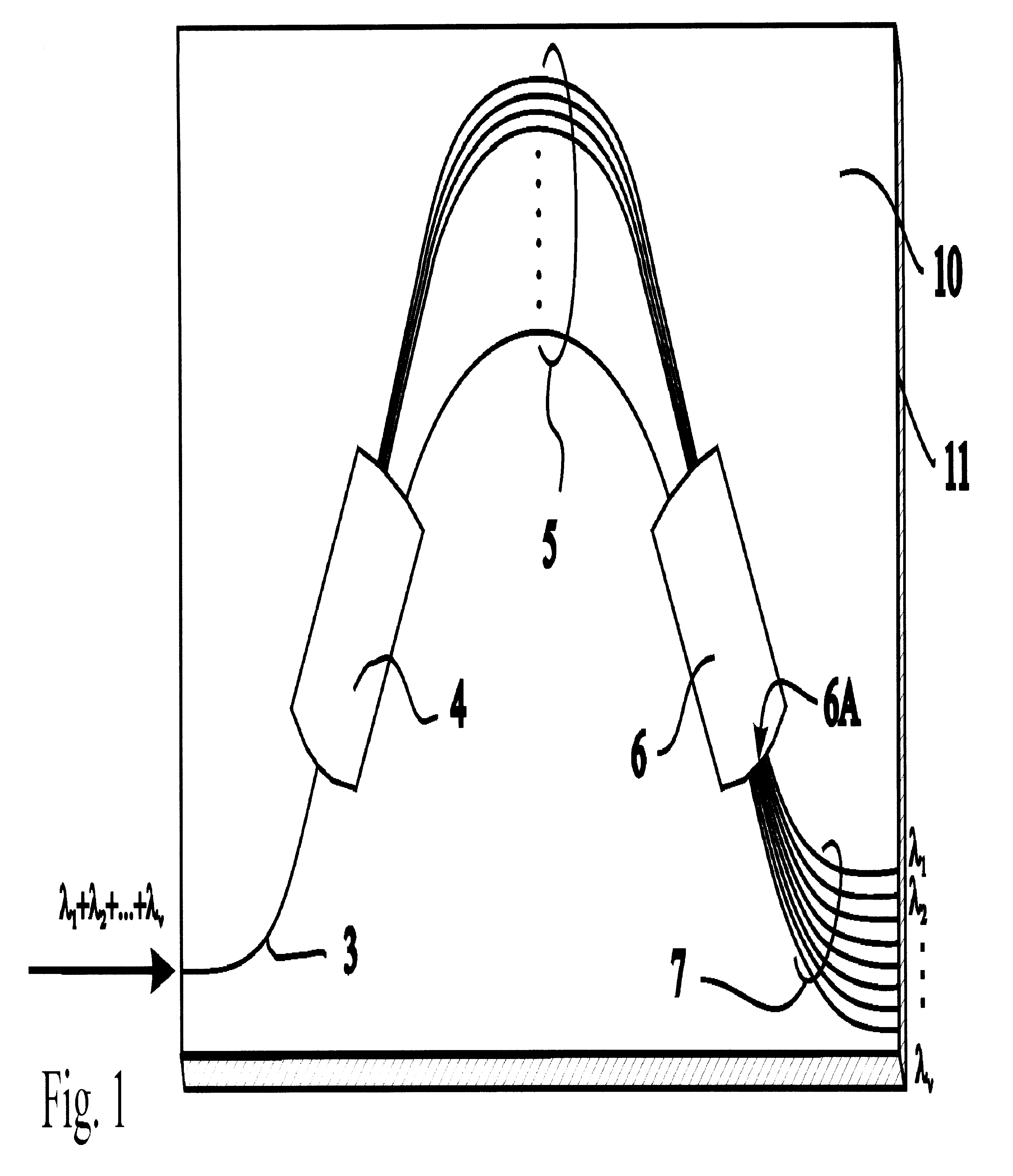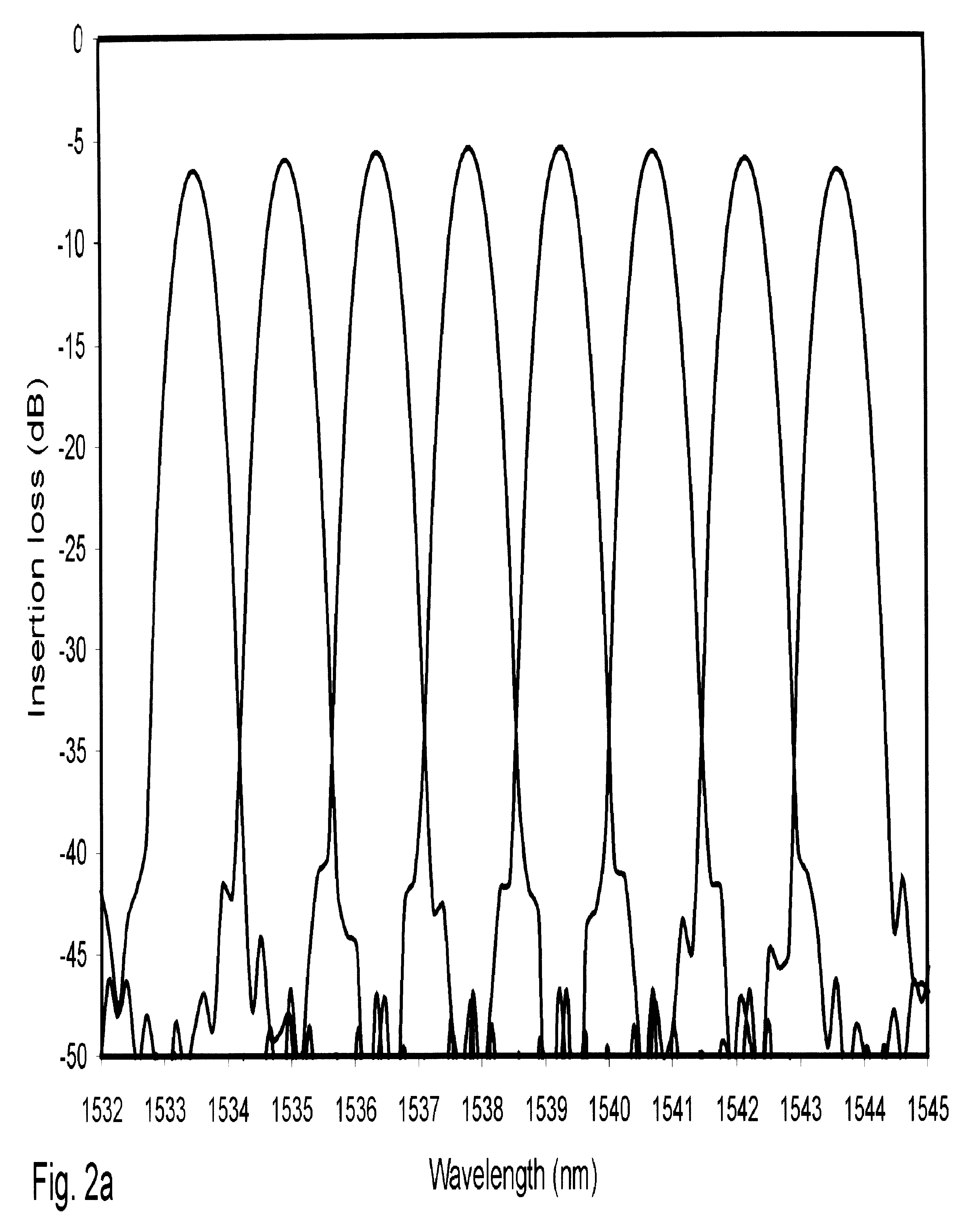Reflective Arrayed Waveguide Grating
a waveguide and array technology, applied in the field of photonic integrated circuits, can solve the problems of higher insertion loss, packaging loss, long waveguide length in the array, etc., and achieve the effect of shortening waveguide length, and reducing chip size and on-chip losses
- Summary
- Abstract
- Description
- Claims
- Application Information
AI Technical Summary
Benefits of technology
Problems solved by technology
Method used
Image
Examples
Embodiment Construction
[0032] The current invention describes a solution to the size reduction problem with a goal to reduce the chip size with simultaneous improvement of performance in terms of reduced loss and external interface. The most compelling rationale for size reduction are: (i) yield per wafer will increase as the size per chip is reduced; this in turn will cut the cost of the devices, (ii) smaller chip size will result in smaller package size, and (iii) it is easier to maintain temperature uniformity of a smaller chip and smaller package which is crucial for reliable device operation.
[0033] In addition to the size reduction, other objectives of the present invention are to reduce the on-chip loss and also to reduce the external interfaces to improve the reliability of the devices built around this chip. The device disclosed herein accomplishes all three objectives. A further objective is to use these chips as a building block for triple-phase integration.
DETAILED DESCRIPTION OF PREFERRED EMBO...
PUM
 Login to View More
Login to View More Abstract
Description
Claims
Application Information
 Login to View More
Login to View More - R&D
- Intellectual Property
- Life Sciences
- Materials
- Tech Scout
- Unparalleled Data Quality
- Higher Quality Content
- 60% Fewer Hallucinations
Browse by: Latest US Patents, China's latest patents, Technical Efficacy Thesaurus, Application Domain, Technology Topic, Popular Technical Reports.
© 2025 PatSnap. All rights reserved.Legal|Privacy policy|Modern Slavery Act Transparency Statement|Sitemap|About US| Contact US: help@patsnap.com



